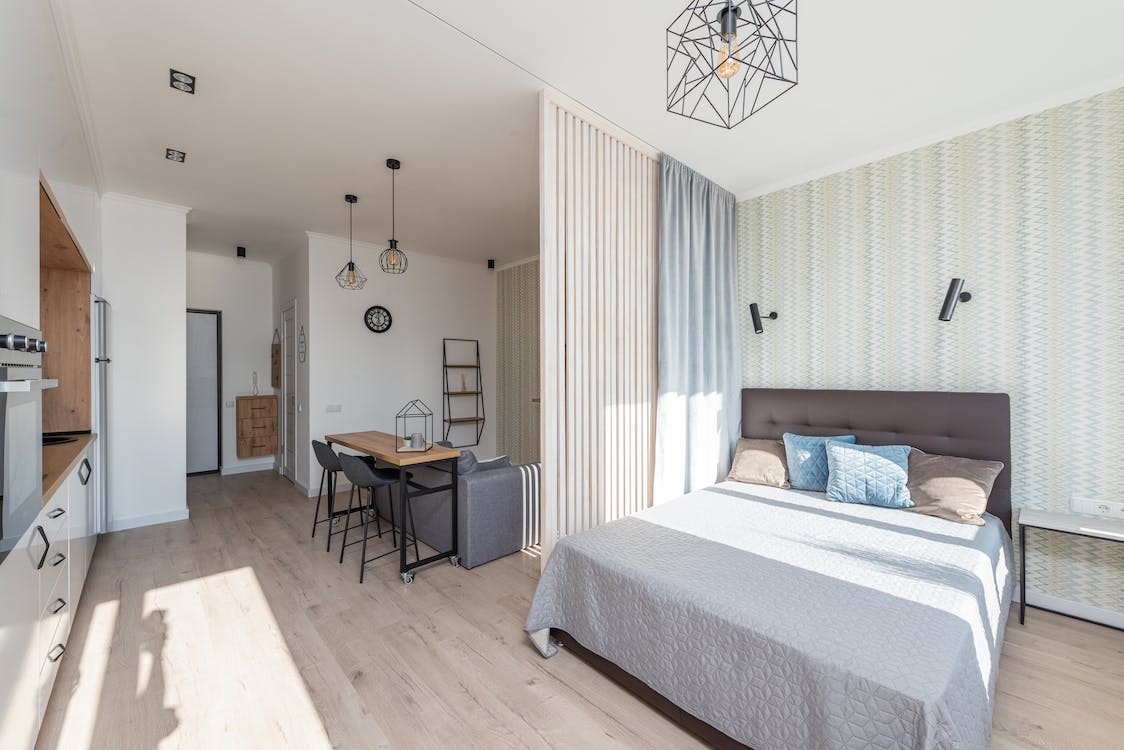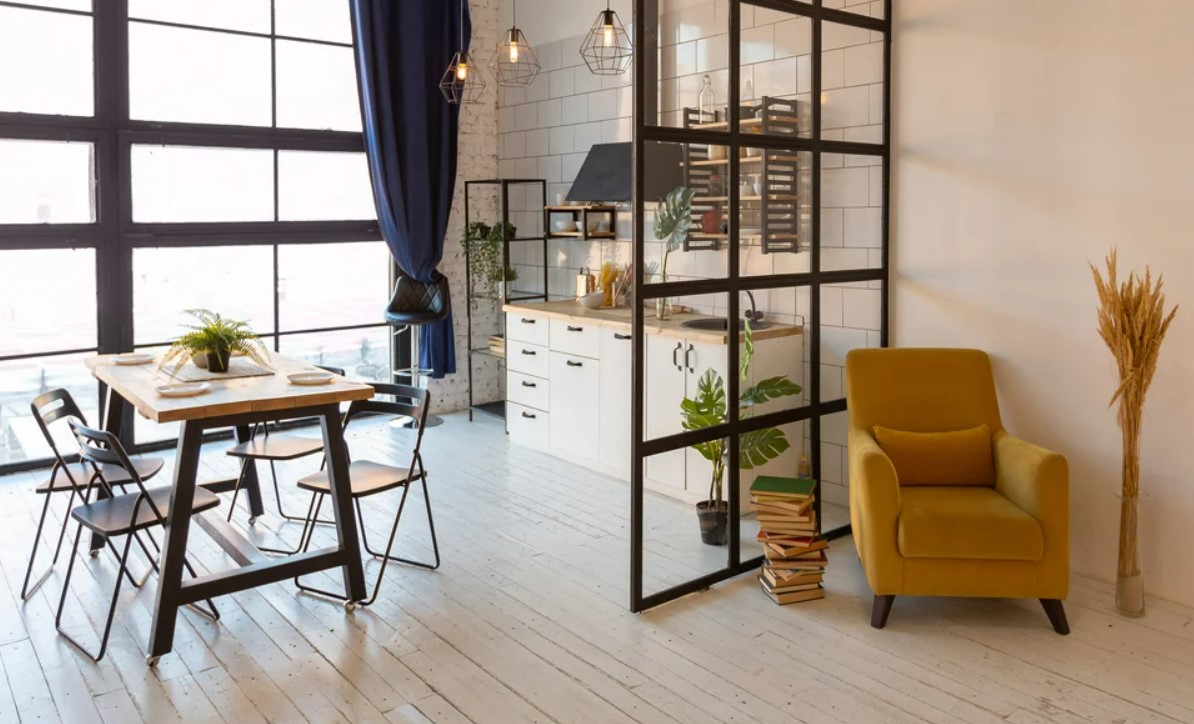Designing for small spaces requires careful consideration and creativity to maximise functionality and aesthetics within the limited square footage. Whether living in a compact apartment, a tiny house or simply having a small room, the key lies in making the most of every inch. With strategic planning, clever storage solutions, and smart design choices, small spaces can be transformed into comfortable and stylish environments.
This guide will explore tips, tricks, and ideas to help you optimise small spaces and create a functional, inviting, and visually appealing living area. From space-saving furniture arrangements to clever storage hacks, get ready to unlock the potential of limited square footage and embrace the beauty of designing for small spaces. Keep reading to learn more.

To be able to design a small space well, you first need to understand the small space concept. Opting for space-saving furniture solutions’s also important for small spaces. When it comes to storage, you should go for clever storage strategies. Light and colours also play a key role in designing small spaces, so you should be mindful of that. Your ultimate goal is to create a functional natural flow and an aesthetically pleasing space.
Best Guide for Designing for Small Spaces
1. Understand the space
As we already mentioned, to design a small space that is cosy, practical and functional, we must first understand the concept of small space. You need to assess the size and layout of your compact living space to get the best out of it. As far as small spaces are concerned, you should be smart about using every corner and nook in the best way possible.
To do that right, you should measure your floor to know exactly how much available space you have. Then you can create a blueprint for a convenient and visually appealing design. Even though small spaces come with their challenges, they also present us with unique opportunities to be innovative and creative.
2. Opt for space-saving furniture solutions
One of the best things you can do for small spaces is opt for space-saving furniture solutions. Maximising the functionality of limited square footage requires the support of multifunctional furniture pieces. These ingenious designs serve multiple purposes, allowing you to effectively utilise every inch of space. The possibilities are vast, with options like sofa beds that convert into sleeping quarters and coffee tables with concealed storage compartments.
You can seamlessly adapt your space to accommodate various daily needs by incorporating multifunctional furniture. If you intend to purchase a small space, pay attention to its furniture pieces. If you plan to buy a property in Sydney, your best option is to work with a local buyer’s agent from Sydney, who can find listings according to your specifications. For instance, if you buy a small space, you can ask for a fully furnished one.
3. Go for clever storage strategies
Designing for small spaces requires creativity and smart solutions. Plenty of functional storage and best storage facility options are necessary for any type of home. Storage helps us organise our homes and keep them clutter-free. Choosing storage for a small space can be challenging, as with almost everything. One of the best storage solutions for small spaces implies using vertical space. Y
ou can install tall shelves or wall-mounted storage. This is a much better strategy as you save precious floor space. Vertical storage solutions offer generous room for books, decorations, and personal items, while also directing attention upward, giving the illusion of a more expansive space.
4. Play with light and colour
Light and colours are two powerful tools used for Designing for small spaces .They can make a small space look and feel more open, inviting, airy and spacious. If your space is abundant in natural light, that is convenient as natural light expands the area visually and creates a sense of warmth.
That’s why maximising natural light should be a top priority. You should keep the windows unobstructed and use sheer curtains to do that. Furthermore, strategically positioning mirrors close to windows can aid in reflecting and amplifying natural light, thereby enhancing the brightness and overall atmosphere of the room.
5. Create a functional natural flow
Whatever design elements you go for, it’s important to create a functional natural flow in the space. You should arrange the furniture in such a way as to keep traffic patterns clear. Incorporating greenery and natural elements into your limited space can profoundly impact you.Indoor plants bring a refreshing and aesthetic touch, contribute to air purification, and promote a sense of well-being. Select plants that thrive in low-light . you can find Best Balcony Garden Plants for it . This will make environments or consider space-saving options like hanging planters or vertical gardens. Nature indoors establishes a tranquil and invigorating ambience, infusing your small space with vibrancy and vitality.
Why you need design for Small Spaces ?

Designing for small spaces is important for following several reasons:
Space efficiency:
Small spaces require careful planning and optimization to make the most of the available area. By employing smart design strategies, such as utilizing multifunctional furniture, maximizing vertical space, and incorporating clever storage solutions, you can create a functional and comfortable living environment within a limited footprint.
Practicality:
Small spaces often require a high level of practicality in design. Each element and piece of furniture must serve a purpose and contribute to the overall functionality of the space. Efficient layouts, flexible furniture arrangements, and thoughtful organization help ensure that every square inch is utilized effectively.
Budget-friendly:
Smaller spaces typically require fewer materials and furnishings, making them more cost-effective to design and decorate. With a smaller area to cover, you can invest in higher-quality materials, fittings, and finishes without exceeding your budget. Additionally, smaller spaces generally consume less energy for heating, cooling, and lighting, resulting in lower utility costs over time.
Sustainability:
Designing for small spaces promotes sustainability by encouraging resource conservation. With limited space, there is a natural inclination to reduce clutter and limit excessive consumption. This mindset aligns with sustainable design principles, emphasizing minimalism, durability, and the use of eco-friendly materials.
Urban living:
Small spaces are prevalent in urban areas where land and housing costs are high. As urbanization continues to rise, designing for small spaces becomes crucial to accommodate the growing population. Compact living solutions, such as micro-apartments and tiny houses, allow people to live comfortably in urban environments while making efficient use of limited land resources.
Creative challenges:
Designing for small spaces presents a unique creative challenge for designers. It requires innovative thinking and problem-solving skills to maximize functionality and aesthetics within tight constraints. This challenge often leads to inventive and inspiring design solutions that can be applied to larger spaces as well.
Overall, designing for small spaces is essential for creating functional, efficient, and appealing living environments that make the most of limited space while addressing the practical needs of the inhabitants.
Conclusion
Designing for small spaces requires creative strategies to maximize limited square footage. Discover tips, ideas, and inspiration to make the most of your small space and create a functional, stylish living area.
Small space doesn’t have to feel limiting and it won’t, if you carefully consider its size and layout and choose suitable items.

